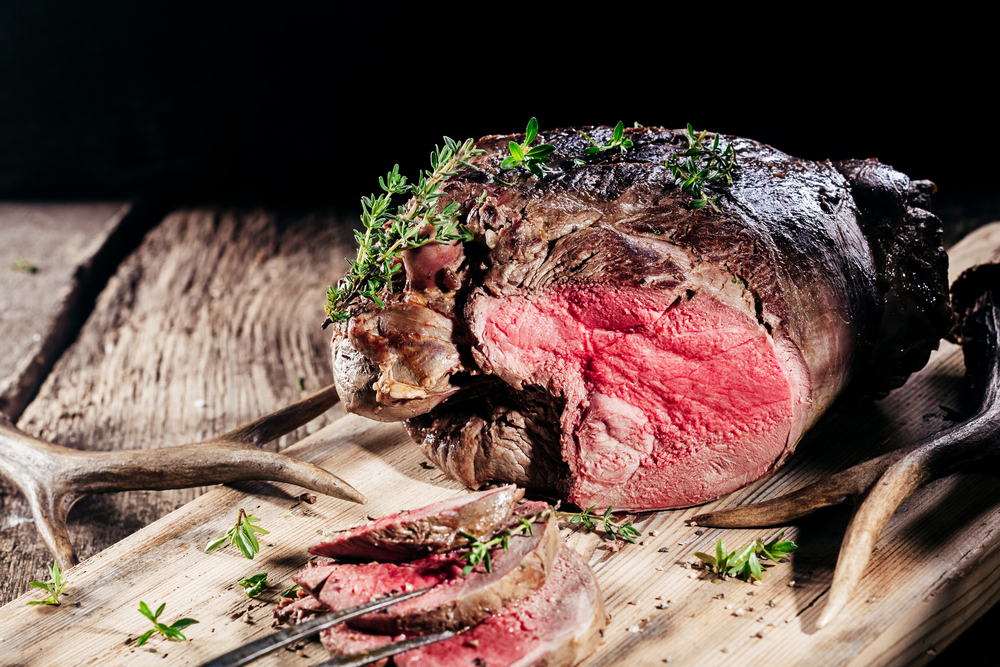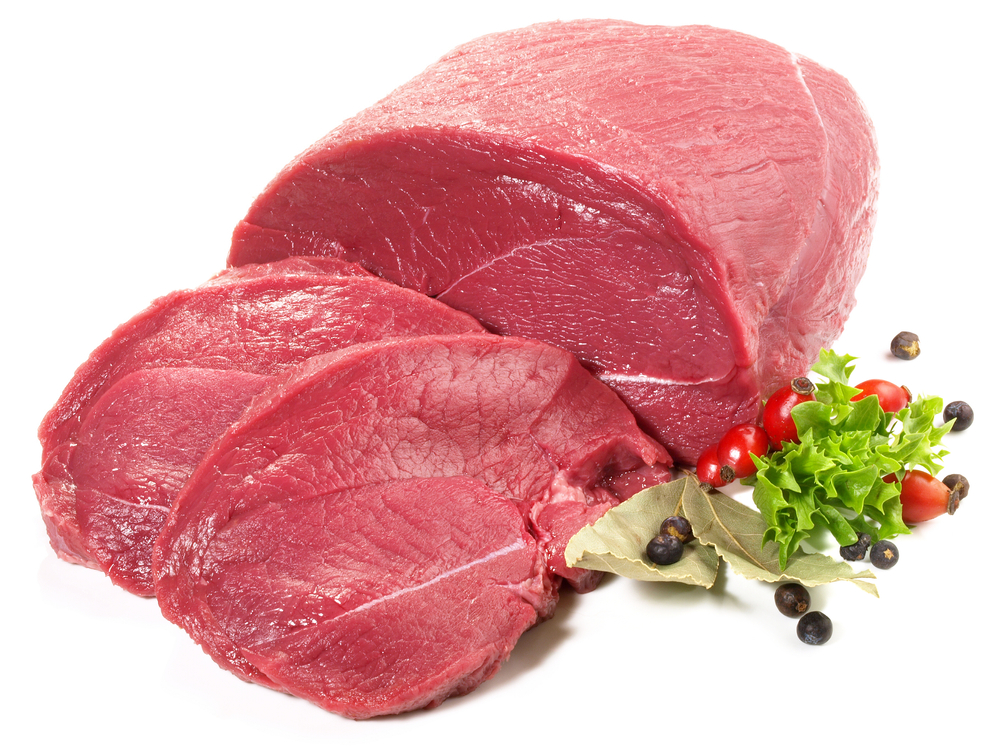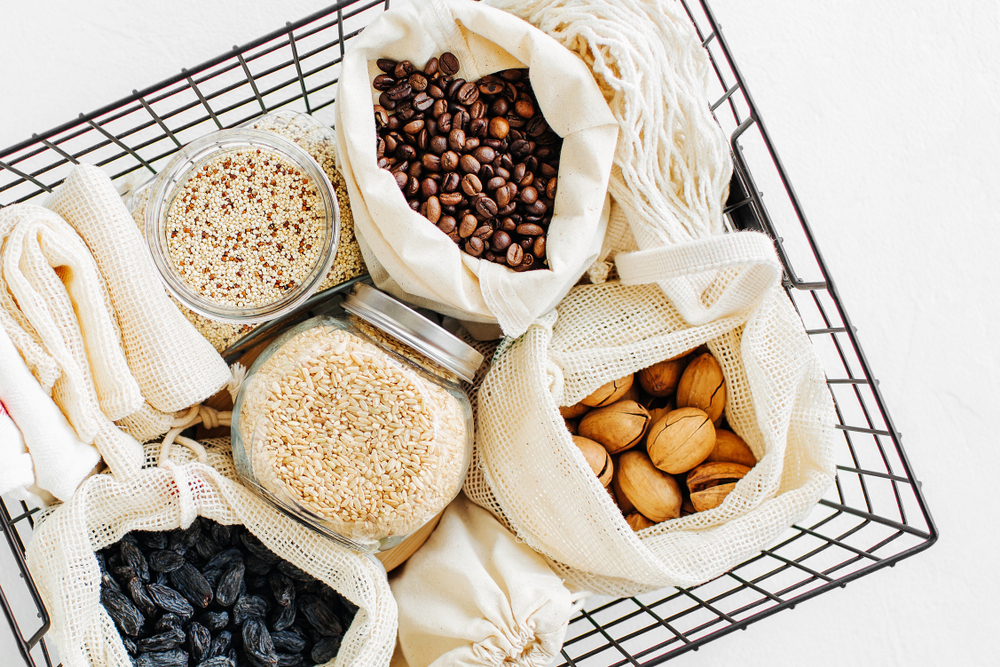Deer meat, also known as venison, is a lean and flavorful meat that has been enjoyed by hunters and food enthusiasts for centuries.
However, as with any meat, it is important to understand how long it can be stored and still be safe to eat.
In this article, I will provide information on how long deer meat can last in different storage conditions, as well as tips on how to properly prepare and package it for maximum shelf life.
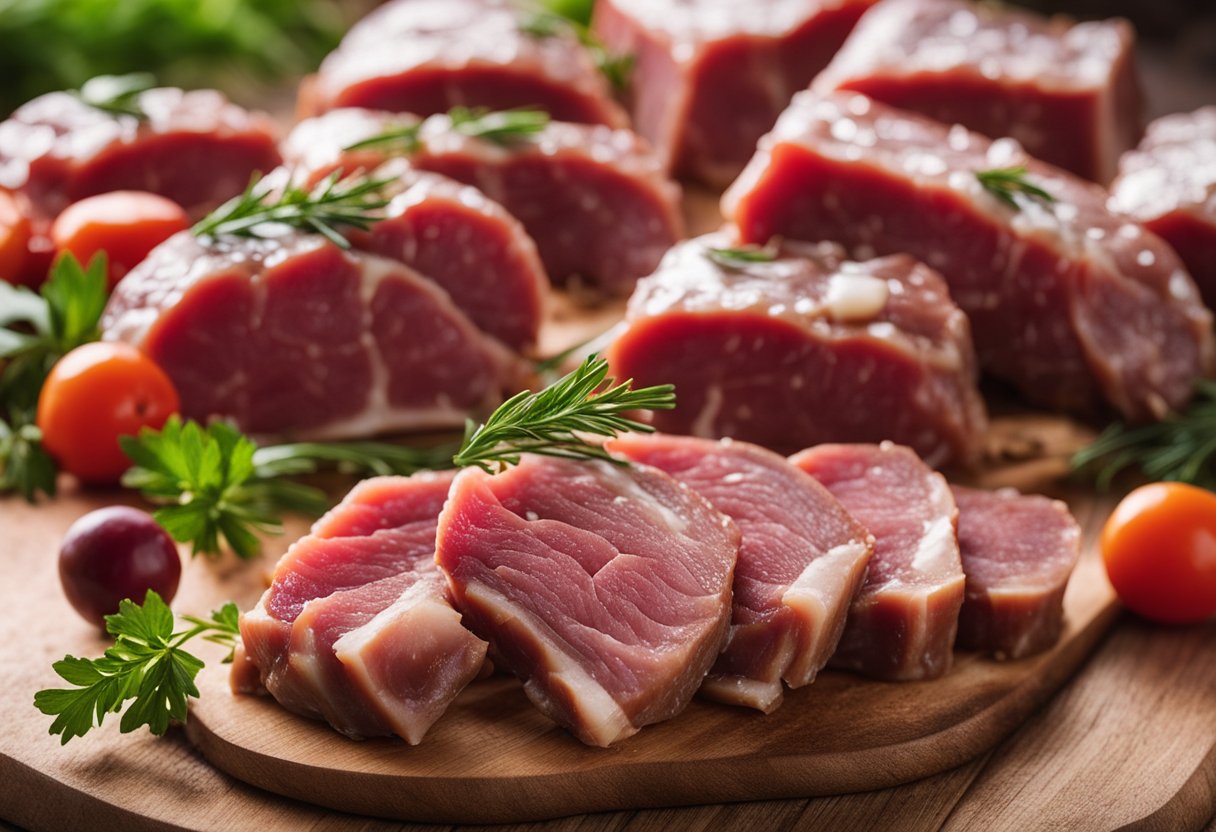
Understanding how long deer meat can last is important for both hunters and consumers who purchase it from a butcher or grocery store.
According to USDA guidelines, uncooked frozen venison should be consumed within 12 months, while cooked meats should not stay frozen for more than 3 months.
However, the length of time that deer meat can be stored varies depending on a number of factors, including the cut of meat, how it is packaged, and the storage conditions.
In the following sections, I will provide more detailed information on these factors and how they can impact the shelf life of deer meat.
Key Takeaways
- Proper storage and packaging can significantly extend the shelf life of deer meat.
- The length of time deer meat can be stored varies depending on factors such as the cut of meat and storage conditions.
- Following USDA guidelines for storage and preparation is important for ensuring the safety and quality of deer meat.
Understanding Deer Meat
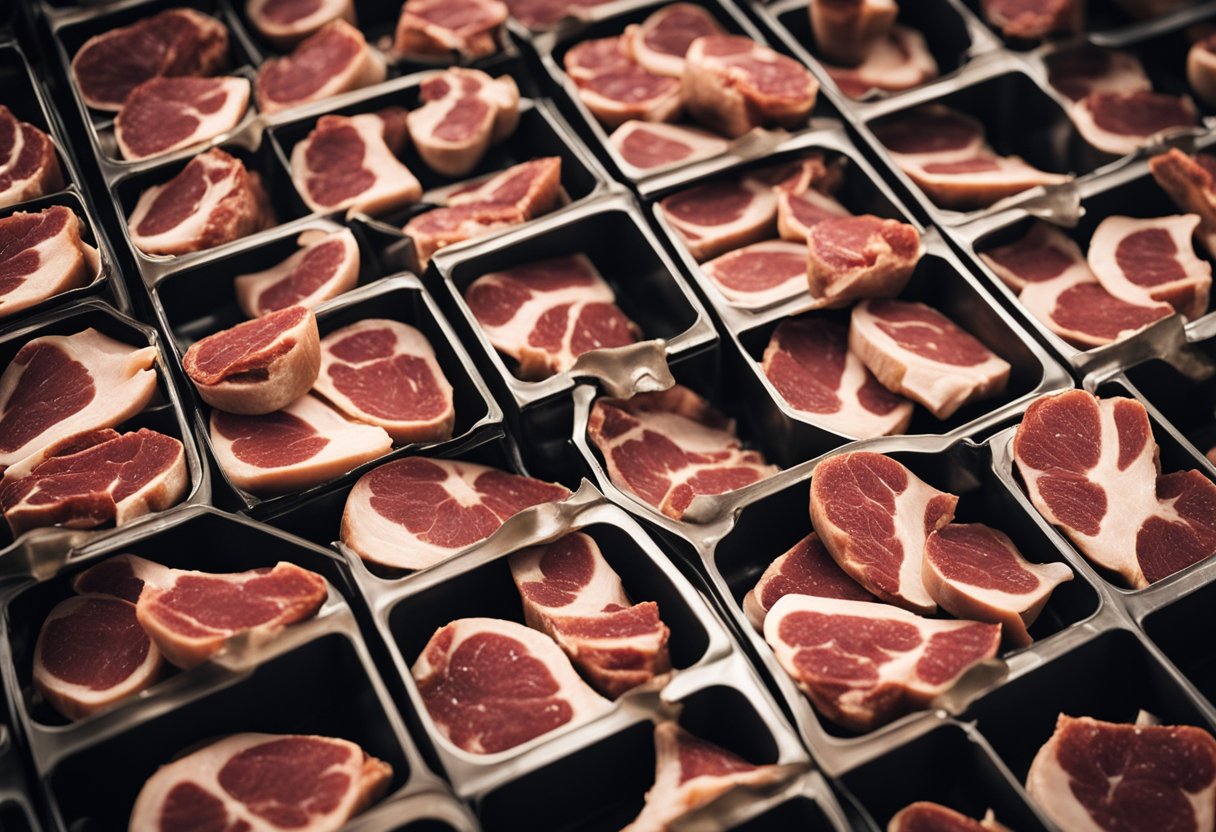
As someone who enjoys hunting and cooking, I know that deer meat, also known as venison, is a great source of protein and can be a delicious addition to any meal.
However, it’s important to understand how to properly handle and store deer meat to ensure its safety and quality.
Deer meat is considered a type of wild game meat, and it differs from beef, pork, and chicken in a few ways.
For starters, deer meat is leaner and has less fat than most other meats, which means it can dry out more easily if overcooked.
Additionally, deer meat has a distinct flavor that some people love and others may find too strong.
When it comes to handling deer meat, it’s crucial to take proper precautions to avoid any potential health risks.
Like all meat, deer meat can carry harmful bacteria such as E. coli and salmonella, so it’s important to handle it with care.
This means washing your hands and any surfaces that come into contact with the meat, and cooking it thoroughly to an internal temperature of at least 160°F.
In terms of storage, deer meat can be kept in the refrigerator for a short period of time, but it’s best to freeze it if you’re not planning to use it within a day or two.
Properly wrapped and stored in the freezer, deer meat can last for several months or even up to two years.
However, it’s important to note that the quality of the meat may deteriorate over time, so it’s best to use it within a reasonable timeframe.
Overall, deer meat can be a delicious and healthy addition to your diet if handled and stored properly. Just remember to take the necessary precautions and enjoy it in moderation as part of a balanced diet.
Deer Meat Storage
As a hunter, I know how important it is to store deer meat properly to ensure its quality and safety. Proper storage can also help extend the shelf life of the meat, allowing you to enjoy it for a longer period.
One of the best ways to store deer meat is to freeze it. Freezing can help preserve the meat’s quality and prevent spoilage.
Before freezing, it is important to wrap the meat properly to prevent freezer burn. You can use freezer paper, plastic wrap, or aluminum foil to wrap the meat. It is recommended to use a double layer of wrap to prevent air from getting in.
You can also use freezer bags or vacuum sealers to store the meat. Vacuum sealing is a great option as it can help remove air and prevent freezer burn.
When storing deer meat in the freezer, it is important to keep the temperature at or below 0°F (-18°C). This can help prevent bacterial growth and ensure the quality of the meat.
You can store deer meat in the freezer for up to a year, but it is recommended to consume it within 6-9 months for the best quality.
If you don’t have a freezer, you can store deer meat in the refrigerator for a few days. However, it is important to consume the meat within 2-3 days as it can spoil quickly.
After that, you can either cook it or freeze it to extend its shelf life.
In summary, proper storage is crucial for preserving the quality and safety of deer meat. Freezing is the best option for long-term storage, and vacuum sealing can help prevent freezer burn.
Remember to keep the temperature at or below 0°F (-18°C) and consume the meat within 6-9 months for the best quality.
Preparation and Packaging of Deer Meat
When it comes to preserving the quality of deer meat, proper preparation and packaging are crucial. Here are some key factors to consider:
Preparation
Before freezing deer meat, it is important to properly clean and trim it. Remove any fat or connective tissue, as these can cause the meat to spoil more quickly.
It is also a good idea to rinse the meat thoroughly with cold water to remove any blood or debris.
Packaging
The way you package deer meat can have a significant impact on its longevity in the freezer. Vacuum sealing is one of the best methods for preserving the quality of the meat.
This involves using a vacuum sealer to remove all of the air from the packaging, which helps prevent freezer burn and other forms of deterioration.
If you don’t have a vacuum sealer, freezer paper is another good option. Wrap the meat tightly in several layers of paper, making sure to press out as much air as possible.
Alternatively, you can use plastic bags designed for freezer storage, such as freezer bags or heavy-duty zip-top bags.
Aluminum foil is not recommended for long-term freezer storage, as it can allow air to penetrate the packaging and cause the meat to dry out or develop freezer burn.
Overall, the key to packaging deer meat for the freezer is to minimize the amount of air that comes into contact with the meat. This helps prevent oxidation, which can cause the meat to spoil more quickly.
In summary, proper preparation and packaging are essential for preserving the quality of deer meat in the freezer.
Whether you choose to vacuum seal, use freezer paper, or plastic bags, the goal is to minimize air exposure and keep the meat as fresh as possible for as long as possible.
Quality Indicators of Deer Meat
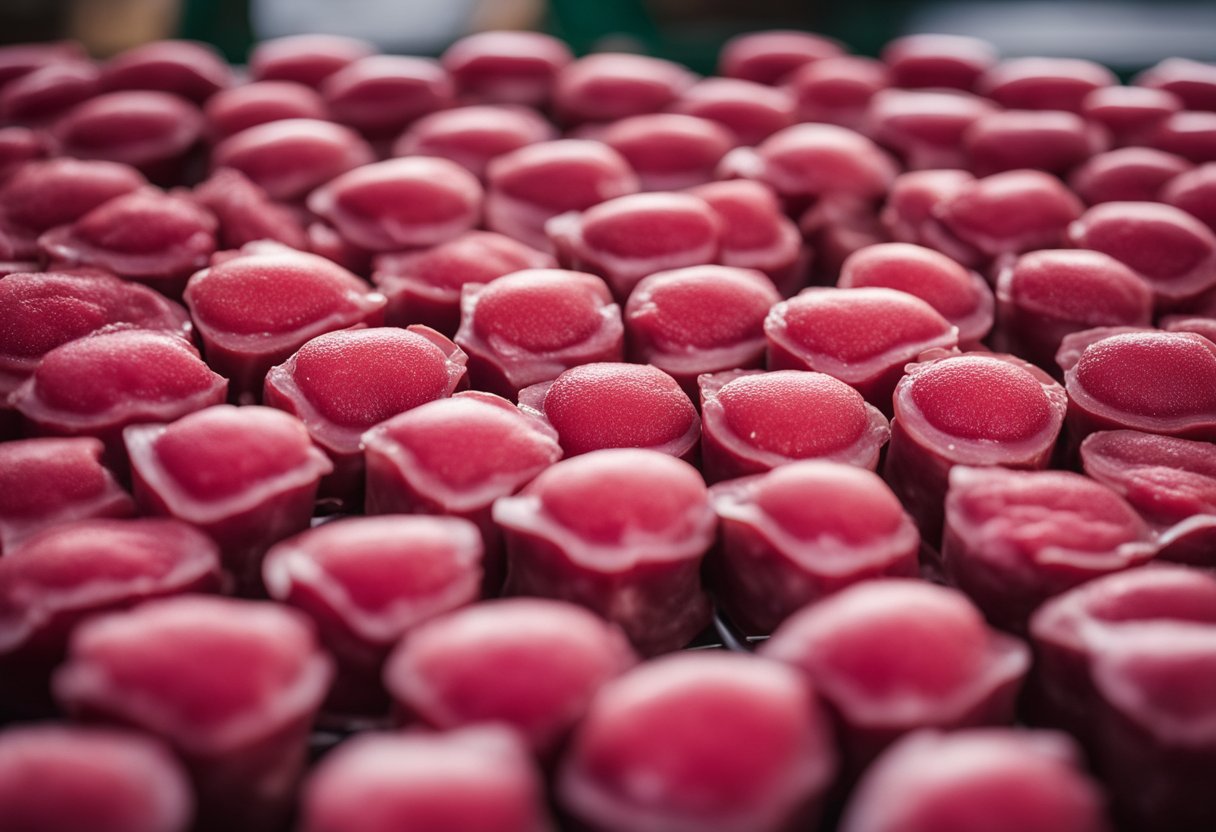
As a survivalist and hunter, I know that the quality of deer meat is crucial for its consumption.
There are several indicators of deer meat quality, including meat quality, color, texture, smell, freshness, slimy, mold, and discoloration.
Meat Quality
The quality of deer meat is determined by several factors, including the age of the deer, its diet, and how it was killed and processed.
The meat quality of a young deer is usually better than that of an older one. The diet of the deer also plays a crucial role in determining the meat quality.
A deer that has been feeding on fresh vegetation will have better meat quality than one that has been feeding on processed food.
Color and Texture
The color and texture of deer meat are also important indicators of its quality. Fresh deer meat should have a bright red color and a firm texture.
If the meat is brown or gray, it may be an indication that it is not fresh. The texture of the meat should be firm and not slimy or mushy.
Smell and Freshness
The smell of deer meat is another indicator of its quality. Fresh deer meat should have a mild, gamey smell. If the meat smells sour or rancid, it may be an indication that it is not fresh.
The freshness of deer meat is also determined by the absence of slimy or moldy spots on the surface.
Slimy, Mold, and Discoloration
Slimy and moldy spots on the surface of deer meat are a clear indication that it is not fresh. Discoloration, such as green or gray areas, is also a sign that the meat is not fresh and should not be consumed.
In conclusion, it is important to pay attention to the quality indicators of deer meat to ensure its safety and palatability.
By following the guidelines outlined above, you can ensure that the deer meat you consume is fresh and of high quality.
Deer Meat Varieties and Their Shelf Life
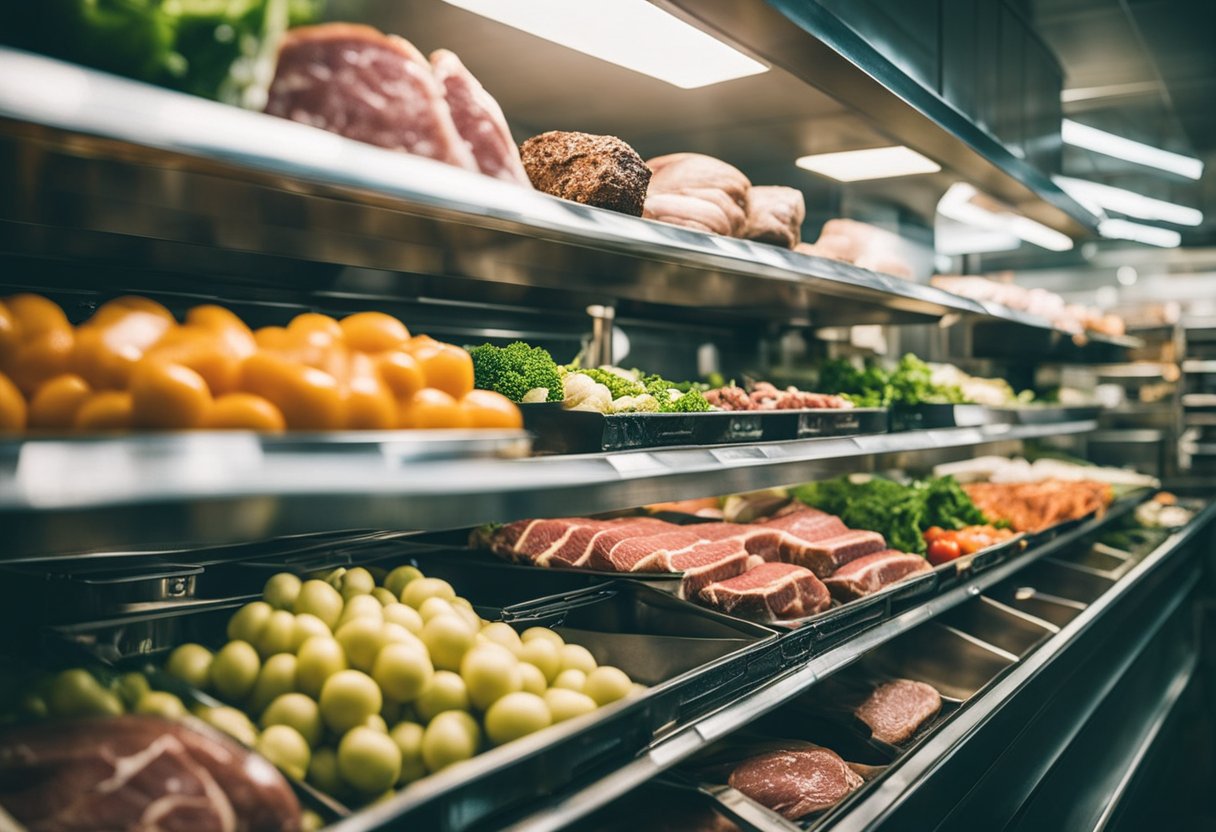
As a hunter or a meat lover, it’s essential to know how long different deer meat varieties last in the freezer.
The shelf life of deer meat depends on various factors, including the type of meat, the method of storage, and the temperature of the freezer.
Steaks and Roasts
Deer steaks and roasts are among the most popular deer meat varieties. When stored properly in a freezer, they can last up to 12 months.
To preserve the quality of the meat, it’s essential to wrap them tightly in plastic wrap or aluminum foil and place them in an airtight container or a freezer bag.
Ground Deer Meat and Venison Steak
Ground deer meat and venison steak have a shorter shelf life compared to steaks and roasts. They can last up to six months in the freezer.
It’s crucial to store them in an airtight container or freezer bag to prevent freezer burn.
Cooked Meat
If you have leftover cooked deer meat, you can store it in the refrigerator for up to four days. To freeze cooked deer meat, you should cool it down to room temperature before placing it in the freezer. Cooked deer meat can last up to three months in the freezer.
Raw Meat
Raw deer meat can last up to six months in the freezer. It’s essential to store it in an airtight container or freezer bag to prevent freezer burn.
It’s also crucial to label the container or bag with the date of storage to keep track of the meat’s age.
In conclusion, the shelf life of deer meat varies depending on the type of meat, the method of storage, and the temperature of the freezer.
By following the guidelines above, you can ensure that your deer meat stays fresh and safe to eat for an extended period.
Potential Issues with Frozen Deer Meat
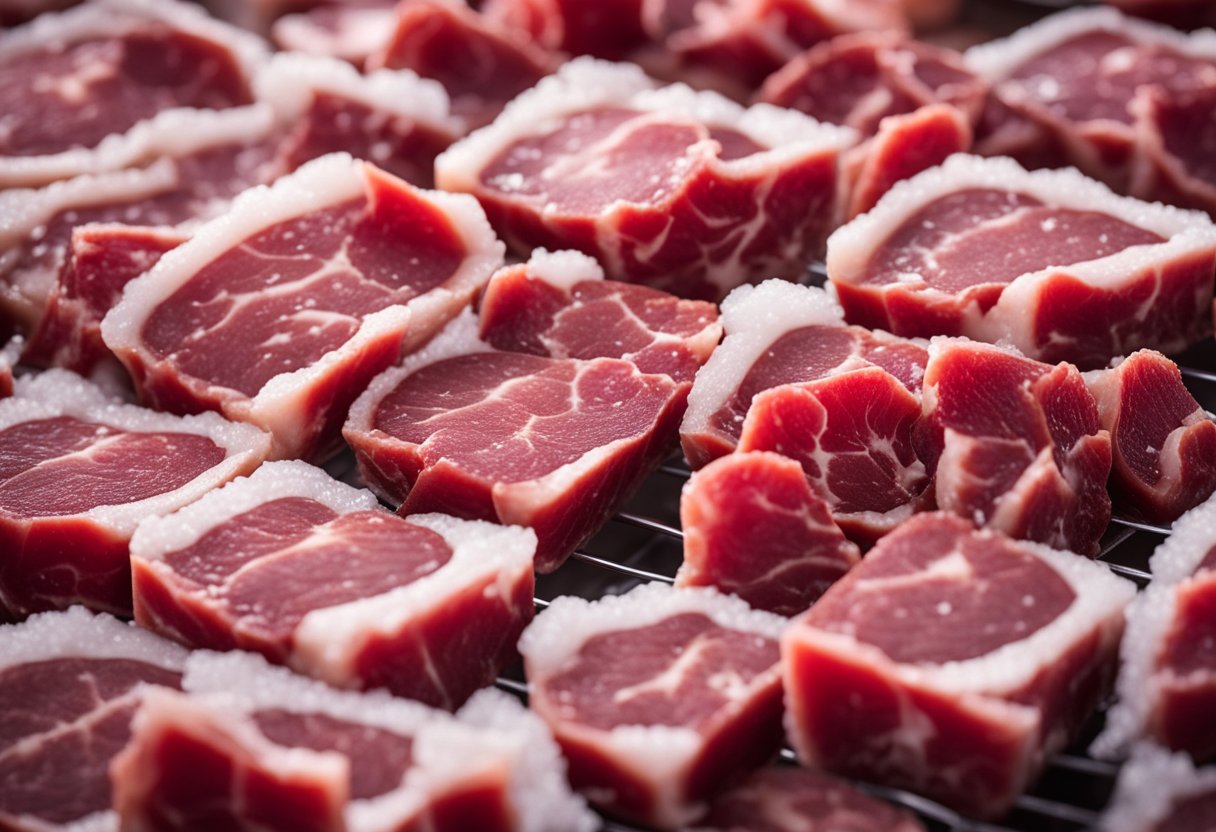
When it comes to freezing deer meat, there are a few potential issues that you should be aware of. Here are some of the most common problems that you might encounter:
Freezer Burn
One of the most common issues with frozen deer meat is freezer burn. Freezer burn occurs when the meat is exposed to air inside the freezer.
This can cause the meat to become dry and tough, and it can also affect the flavor. To avoid freezer burn, make sure that your deer meat is stored in an airtight container.
You can also wrap the meat in plastic wrap or aluminum foil before placing it in the freezer.
Bacteria
Another potential issue with frozen deer meat is the growth of bacteria. While freezing can slow down bacterial growth, it doesn’t completely eliminate it.
If your deer meat has been in the freezer for too long, it may start to develop harmful bacteria. To avoid this, make sure that you only freeze fresh deer meat, and try to use it within the recommended time frame.
Spoiled Deer Meat
Finally, it’s important to note that frozen deer meat can still spoil if it’s not stored properly. If you notice any signs of spoilage, such as a bad smell or discoloration, you should discard the meat immediately.
To avoid spoilage, make sure that your freezer is set to the correct temperature (0°F or below), and try to use your deer meat within the recommended time frame.
Overall, freezing deer meat can be a great way to preserve it for later use. However, it’s important to be aware of the potential issues and to take steps to avoid them.
By following these tips, you can ensure that your frozen deer meat stays fresh and safe to eat.
Thawing Process for Deer Meat
When it comes to thawing frozen deer meat, there are a few important things to keep in mind to ensure that the meat is safe to eat and maintains its quality.
Firstly, it’s important to thaw deer meat slowly and safely. The best way to do this is to transfer the frozen meat from the freezer to the refrigerator and let it thaw there.
This method can take anywhere from 12 to 24 hours depending on the size of the meat cut.
It’s important to note that ground deer meat should only be stored in the refrigerator for 1 to 2 days after thawing at 35 – 40 degrees source.
If you need to thaw deer meat more quickly, you can also use the cold water method. To do this, place the frozen meat in a leak-proof plastic bag and submerge it in cold water.
Change the water every 30 minutes until the meat is thawed. This method is faster than thawing in the refrigerator but requires more attention to ensure that the water temperature stays below 40 degrees.
It’s important to never thaw deer meat at room temperature or in warm water as this can lead to bacterial growth and make the meat unsafe to eat.
Finally, it’s important to note that when deer meat is frozen, it can also freeze liquids that may be in the same container or package. This can lead to a loss of quality and flavor when the meat is thawed.
To prevent this, it’s best to separate liquids from the meat before freezing, or to use airtight containers or freezer bags to prevent any liquids from coming into contact with the meat.
Overall, the key to safely thawing deer meat is to do so slowly and safely, either in the refrigerator or using the cold water method.
By following these guidelines, you can ensure that your deer meat is safe to eat and maintains its quality.
USDA Guidelines for Deer Meat
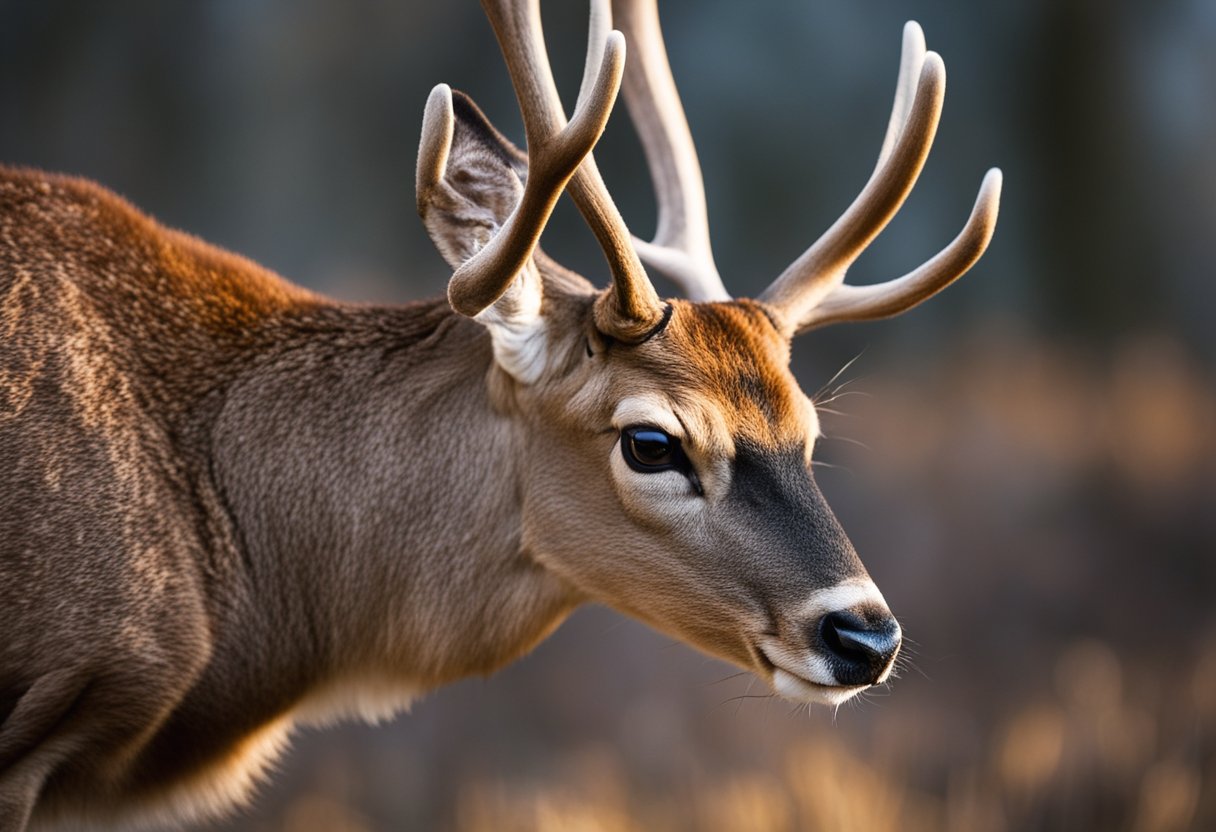
As per the USDA guidelines for wild game, deer meat can be frozen, thawed, and eaten for up to 9 to 12 months after initial freezing.
However, some sources say that deer meat can be frozen for up to 10 years and still tastes fine when thawed and cooked.
It is important to note that the 9-12 month guideline is set by the USDA’s guidelines for wild game and pertains directly to manufacturers.
According to the USDA, uncooked frozen venison meat should be consumed within 12 months for best results.
However, if you store your deer meat properly, it can still be good after the 12-month mark. When checking your deer meat for quality, look for any signs of freezer burn or excessive ice crystals.
It is important to keep in mind that ground deer meat has a slightly shorter shelf life and should ideally be consumed within 6 to 8 months of freezing.
Venison roasts, steaks, chops, and stew meat can last up to 12 months when stored properly in a freezer.
To ensure the quality and safety of your deer meat, it is important to follow the USDA’s guidelines for storing and handling meat.
The USDA recommends that perishable meats and poultry in vacuum packaging cannot be stored at room temperature.
They must be kept either in the refrigerator at 40 ºF or below, or for longer storage, in the freezer at 0 °F or below.
In summary, the USDA guidelines for deer meat suggest that uncooked frozen venison meat should be consumed within 12 months for best results, while ground deer meat should ideally be consumed within 6 to 8 months of freezing.
Proper storage and handling of deer meat is crucial to ensure its quality and safety.
Hunting and Field Dressing Impact on Deer Meat Shelf Life
As an avid deer hunter, I know that proper field dressing and processing of the meat is crucial for its shelf life.
When hunting, it is important to aim for a clean shot to avoid damaging the meat. A well-placed shot will result in less bloodshot meat, which will improve the taste and texture of the meat.
Once the deer is down, it is important to field dress it as quickly as possible. Field dressing involves removing the internal organs and cooling the meat.
This process should be done as soon as possible to prevent bacteria growth and spoilage.
After field dressing, the meat should be cleaned thoroughly to remove any dirt or debris.
It is also important to remove any hair or fur that may have gotten on the meat during the field dressing process. This can be done by using a knife or a hair removal tool.
The meat should then be cooled as quickly as possible. This can be done by placing the meat in a cooler with ice or by hanging it in a cool, dry place.
The temperature of the meat should be kept at a consistent temperature of 32°F (0°C) or just below to prevent spoilage.
In conclusion, proper hunting and field dressing techniques are crucial for the shelf life of deer meat. By aiming for a clean shot, field dressing the meat quickly, and cooling it as soon as possible, you can ensure that your deer meat will last for a long time.
Curing and Aging Deer Meat
As an avid hunter, I know that curing and aging deer meat can significantly improve its flavor and texture.
Curing venison involves the use of salt, sugar, and other spices to draw out moisture and preserve the meat.
Aging venison, on the other hand, involves allowing the meat to hang in a cool, dry place for several days to several weeks to break down connective tissue and enhance flavor.
When it comes to curing venison, it’s essential to use the right amount of salt and sugar to ensure that the meat is preserved properly.
A good rule of thumb is to use 1 tablespoon of salt and 1 tablespoon of sugar per pound of meat. You can also add other spices such as black pepper, garlic, or rosemary to enhance the flavor.
After you’ve cured the meat, it’s time to age it. Aging venison is a delicate process that requires the right temperature and humidity levels.
Ideally, the meat should be hung in a cool, dry place with a temperature between 32 and 40 degrees Fahrenheit and a humidity level of around 70%.
If the temperature is too high, the meat will spoil, and if it’s too low, the aging process will be slowed down.
The length of time needed to age venison depends on several factors, including the age of the deer, the temperature, and the humidity levels.
Generally, the longer you age the meat, the more tender and flavorful it will become. For example, if you’re aging a young deer, you may only need to hang the meat for a few days.
However, if you’re aging an older deer, you may need to hang the meat for several weeks.
In conclusion, curing and aging deer meat can be a great way to enhance its flavor and texture.
By following the right steps and using the right techniques, you can turn tough, gamey venison into a delicious and tender meal.
Understanding the Role of Temperature in Deer Meat Preservation
As a hunter, I understand the importance of properly storing and preserving deer meat. One of the most critical factors in preserving venison is temperature.
Freezing deer meat at the right temperature is crucial to ensuring its quality and longevity.
Maintaining a consistent freezer temperature of 0°F (-18°C) or lower slows down microbial activity and enzyme action, keeping your venison fresh for an extended period.
The lower the temperature, the slower the enzyme activity, which helps preserve the meat’s quality.
It’s essential to note that the temperature at which deer meat is stored plays a crucial role in determining its shelf life.
The longer the meat stays in the freezer, the more likely it is to lose its quality. Therefore, it’s recommended to consume uncooked frozen venison meat within 12 months for best results, according to the USDA [1].
When checking your deer meat for quality, look for any signs of freezer burn or excessive ice crystals. If the meat is starting to turn brown or has a sour smell, it’s best to discard it.
In summary, temperature is a critical factor in preserving deer meat.
Maintaining a consistent freezer temperature of 0°F (-18°C) or lower slows down microbial activity and enzyme action, keeping your venison fresh for an extended period. Always check your deer meat for quality before consuming it.
Related posts:
Frequently Asked Questions
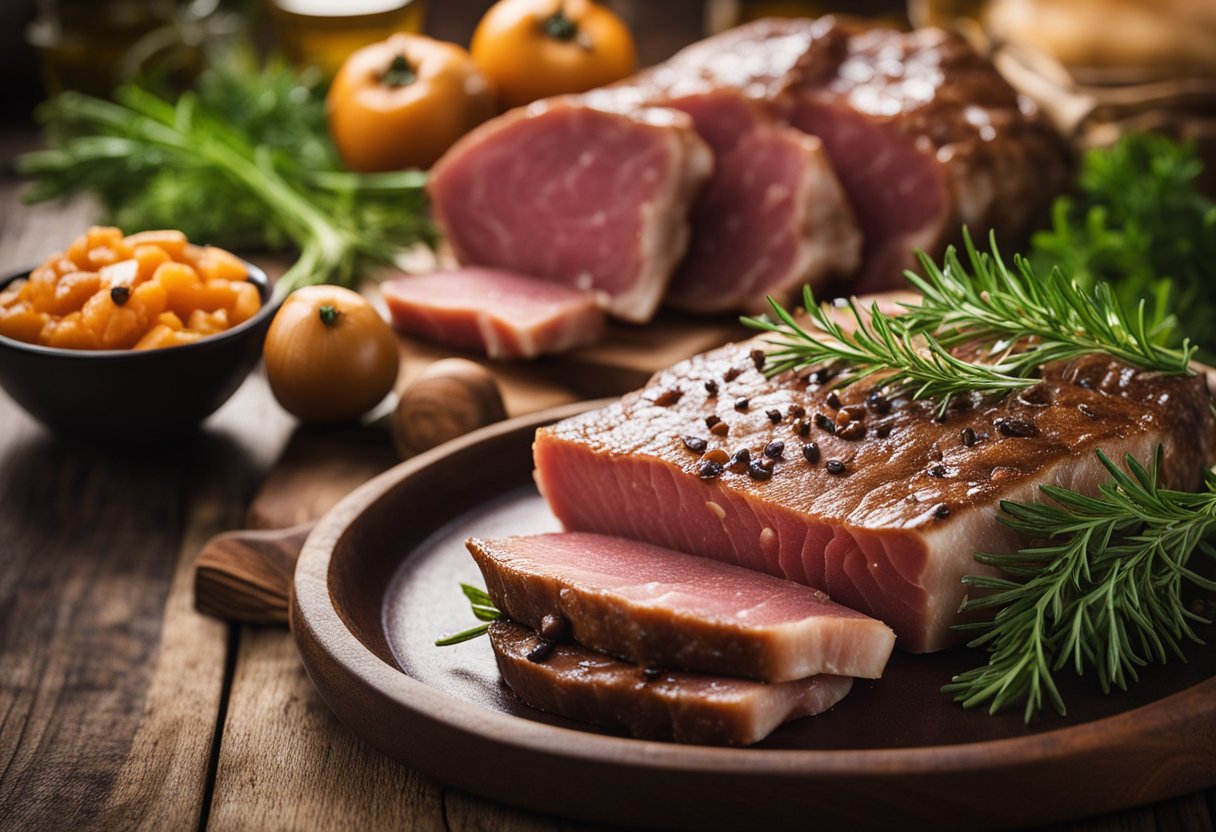
How long is deer meat good in the fridge after thawing?
According to Bowhunting.com, thawed deer meat can last in the fridge for up to five days. After that, it’s best to either cook or freeze the meat to avoid spoilage.
How to tell if frozen deer meat is bad?
Frozen deer meat can last up to 12 months if properly stored, but how do you know if it’s still good?
According to MSN, if the meat has any signs of freezer burn, such as discoloration, dryness, or a strange odor, it’s best to discard it.
How long does deer sausage last in the freezer?
Deer sausage can last in the freezer for up to six months, according to SmarterHomeMaker.com. It’s important to wrap the sausage tightly in freezer paper or plastic wrap to prevent freezer burn.
How long is vacuum sealed venison good for?
Vacuum-sealed venison can last in the freezer for up to two years, according to TheWildHunter.com.
However, it’s important to note that the quality of the meat may start to deteriorate after about a year.
How long does elk meat last in the freezer?
Elk meat can last in the freezer for up to 12 months, according to HuntingHit.com. Proper storage, such as wrapping the meat tightly in freezer paper or plastic wrap, can help prevent freezer burn and extend its shelf life.
How long will deer meat last in the fridge?
As mentioned earlier, thawed deer meat can last in the fridge for up to five days, according to Bowhunting.com.
It’s important to cook or freeze the meat within that time frame to ensure its freshness and safety for consumption.


